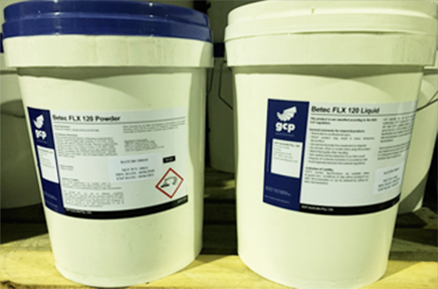Structural Waterproofing: Essential Protection for Building Longevity and Integrity
When constructing or renovating a building, one of the most critical yet often overlooked elements is structural waterproofing. Water ingress can cause significant damage to buildings, from structural weakening and corrosion to mold growth and health hazards. Structural waterproofing is the strategic application of materials and systems designed to prevent water from compromising the integrity of a building's structure.
What is Structural Waterproofing?

Structural waterproofing is the process of making a building or infrastructure resistant to water penetration. It involves applying specialized waterproofing systems to structural components such as basements, foundations, retaining walls, tunnels, and podium decks. These systems are integrated into the structure to provide long-term protection against groundwater and surface water.
Unlike surface-level waterproofing, Structural Waterproofing is embedded into the construction design and often forms a critical component of the building's durability strategy.
Why Structural Waterproofing is Important
-
🛡️ Prevents Structural Damage: Protects concrete, steel, and other materials from deterioration due to water exposure.
-
🧱 Supports Load-Bearing Integrity: Keeps foundations and walls stable under wet conditions.
-
🌬️ Improves Indoor Air Quality: Prevents mold, mildew, and dampness from affecting interior spaces.
-
💰 Reduces Maintenance Costs: Minimizes the need for future repairs caused by water damage.
-
🏗️ Ensures Compliance: Meets building codes and waterproofing standards required by law.
Common Areas Where Structural Waterproofing is Used
-
Basements and cellars
-
Retaining walls and below-ground structures
-
Lift pits and foundation slabs
-
Tunnels and bridges
-
Podium decks and roof terraces
-
Underground car parks
Types of Structural Waterproofing Systems

There are three main types of systems used in structural waterproofing:
-
Type A (Barrier Protection):
-
Uses membranes or coatings to form a barrier against water ingress.
-
Common materials: bitumen sheets, liquid-applied membranes, cementitious coatings.
-
-
Type B (Structurally Integral Protection):
-
Incorporates waterproofing into the structure itself, e.g., watertight concrete or water stops in joints.
-
-
Type C (Drained Protection):
-
Allows water to penetrate but collects and redirects it via cavity drainage membranes and pumps.
-
Often, a combination of these systems is used depending on site conditions and risk levels.
Key Materials Used
-
Bituminous membranes
-
Crystalline Positive Waterproofing compounds
-
Polyurethane and epoxy coatings
-
Bentonite clay panels
-
Cementitious slurries
-
Drainage membranes and sump pump systems
FAQs About Structural Waterproofing
Q1: What’s the difference between structural and surface waterproofing?
A: Structural waterproofing is embedded into the building’s structure, while surface waterproofing is applied on top for cosmetic or light protection. Structural systems are more robust and long-lasting.
Q2: Is structural waterproofing necessary in all buildings?
A: Not all, but it is essential in any below-ground structure, water-retaining area, or where moisture risk is high.
Q3: How long does structural waterproofing last?
A: High-quality systems can last several decades if installed correctly and maintained properly.
Q4: Can structural waterproofing be retrofitted to existing buildings?
A: Yes, through internal cavity drainage systems or external excavation and barrier systems, though it’s more cost-effective during initial construction.
Q5: Who should carry out structural waterproofing?
A: It should be handled by qualified waterproofing specialists or contractors with experience in structural systems, often in collaboration with structural engineers.
Conclusion
Structural waterproofing is not just a protective measure—it’s an investment in the future stability, safety, and value of your property. Whether you're building a new structure or dealing with moisture in an existing one, incorporating a robust waterproofing strategy is essential to avoid long-term damage and costly repairs. With various methods and systems available, consulting with a professional ensures you choose the right approach tailored to your building's unique needs.



Comments
Post a Comment